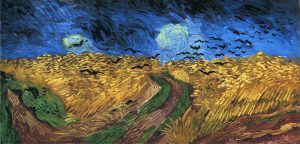(N.B I haven’t been tagging these posts right last time hence I’m reuploading them in hopes that they appear in the class pages again!)
Ideas Ideas Ideas, there’s too much of them and too little time, however I decided to narrow down what I’d like to do into two main aspects.
1) Pathetic Fallacy
2) Emotional clock
So what is pathetic fallacy?
Pathetic Fallacy
Pathetic fallacy is a kind of personification that gives human emotions to inanimate objects of nature for example referring to weather features reflecting a mood.
For example, the sentence “The somber clouds darkened our mood” is a pathetic fallacy as human attributes are given to an inanimate object of nature reflecting a mood.
so what does that have to do with time?
While researching, I came across the chinese body clock. (x)
Our bodies feel emotional changes throughout the day, largely fuelled by the hormonal balances of our bodies. I find it interesting that they name different hours of the day with different organs.
Anyways, as mentioned in a previous post, I decided to focus on the golden hours of roughly 6 – 7 am and 5 – 6 pm in Singapore. Why those hours, I believe that the time represent beginnings and ends at the same time. The end of day and the beginning of night or the end of night and the beginning of day. I believe that Pixar’s Day and Night animation represents this the best.
While photographing my life during those hours, its rather difficult to differentiate from both. The high contrast between light and shadows and the warm lighting are almost the same.
Why the focus on high contrast between light and shadow?
I like playing with the idea of dualities, polar opposites and contrasts. One of my favourite works of all time would be Vincent Van Gogh’s “Wheat Field With Crows”
This work has some history going behind it. It is documented that a few days after he finished this painting, Van Gogh, on July 29, 1890, killed himself with a gunshot to the chest. He sustained a gunshot injury to his abdomen while out in those fields before dying in an inn two days later. On his death bed he revealed he had shot himself.
A common analysis on the work is that it shows Van Gogh’s struggles with his bi-polar depression (known as manic depression during Van Gogh’s time). The dark night against the bright field of gold wheat does not make sense in the natural world. To me, I believe that the painting can go two ways. Either Van Gogh started painting in the day and finished when the sun was setting or he was expressing his own emotions onto the landscape as he normally does with his masterpieces. The unnatural contrasts of light and dark stood out as a clear contrast between maniac happiness and depression. The joy of a journey ahead as one is to traverse in to the path of gold contrasted with the onset despair of doing so in a dark night. One just feels trapped in this flurry of emotions, indecisions and beauty.
The golden hours feel sort of like that to me. Chiaroscuro.
Chiaroscuro
: pictorial representation in terms of light and shade without regard to color
: the arrangement or treatment of light and dark parts in a pictorial work of art
b: the interplay or contrast of dissimilar qualities (as of mood or character)
: the interplay of light and shadow on or as if on a surface
: the quality of being veiled or partly in shadow
( originally posted on 13/2/2016.)

